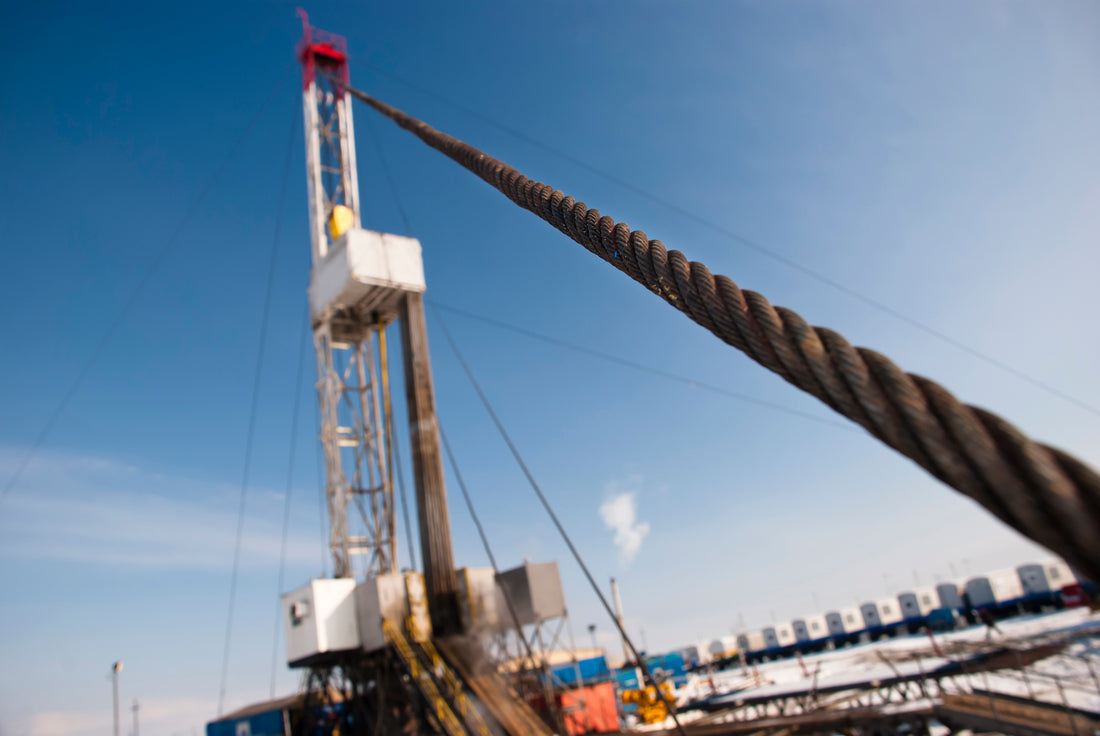
What is Wire Rope, and How is it Different from Cable Rope?
Did you know wire ropes were used as far back as the 1830s for mining hoist applications? Nowadays, we can use steel ropes for many different applications such as lifting and hoisting in elevators and cranes, and for mechanical power transmission. US Cargo Control's wire rope slings are an excellent choice for heavy-duty jobs as their fabrication offers excellent abrasion resistance and heat resistance for extreme conditions.
Although these slings are beneficial for the lifting and rigging industry, there are a few specifications to know before purchasing them. Continue reading what is wire rope, what are important specifications to look for, and how it's different from cable rope.
What is Wire Rope?

These slings carry different properties that can determine their performance. Wire rope is constructed where a strand consists of two or more wires arranged and twisted in a specific arrangement. The individual strands are then laid in a helical pattern around the core of the rope. Once the wires are formed, they all come together to create greater strength and flexibility.
These slings work well for lifting, hoisting, towing, or anchoring loads. They're manufactured in a variety of configurations, with 6x19 and 6x36 being the most common. When you see 6x19 or 6x36 from our website, these numbers represent the number of wires making up the strand and the number of strands wrapped around the core.
For example, a 6x19 indicates that there are 19 wires making up a strand, and 6 strands wrapping around the core. To learn more about our 6x19 wire ropes, look into our bestselling 1/2" Galvanized Wire Rope EIPS IWRC, 1/2" Stainless Steel Wire Rope IWRC T304, and 1/2" Bright Wire Rope EIPS FC.
The configurations will offer different benefits for certain applications. In general, a smaller number of large outer wires offers better wear and corrosion resistance, while a larger number of small wires provides a better level of flexibility and fatigue resistance. Continue reading to learn which wire rope fits your job.
Terms that Define Construction and Properties of Wire Rope
Before immediately purchasing a wire sling, there are 8 properties that you should know about:
- Different Types of Wire Rope Slings
- Length
- Size
- Direction and Type of Lay
- Finish of Wires
- Grade of Rope
- Type of Core
- Construction
1. Different Types of Wire Rope Slings

There are different versions of wire rope slings, ranging from single leg to 4 legs, as well as braided wire rope and domestic wire rope slings (manufactured in the U.S. with Crosby® hardware). When looking at the types of slings we offer at US Cargo Control, be sure to consider how much versatility and capability you need.
For example, a braided wire rope has increased flexibility and friction to grip loads over a regular wire rope. Adding an additional leg to the sling can add additional versatility and strength.
2. Length

This is the total number of feet that are cut to size when wrapped around.
3. Size

This is the measurement of the rope's diameter and can be displayed in inches or millimeters. The industry standard is to measure the rope at its widest point.
These sizes commonly display different strand patterns where the number of layers, wires per layer, and size of the wires per layer all affect the strand pattern. Wire rope can be constructed using one of the following patterns below or using two or more patterns.
- Single Layer - a common example is a 7 wire strand. This has a single-wire center with six wires of the same diameter around it.
- Filler Wire - this has two layers of uniform-size wire around a center with the inner layer having half the number of wires as the outer layer.
- Seale - has two layers of wires around a center with the same number of wires in each layer. All wires in each layer are the same diameter.
- Warrington - this construction has two layers of wires around a center with one diamter of wire in the inner layer, and two diameteres of wire alternating large and small in the outer layer.
- Combination - when a strand is formed in a single operation using two or more of the above constructions, it's referred as a "combined pattern."
4. Direction and Type of Lay
The type of lay refers to the way the wires are laid to form a strand. They're how the strands are laid around the core which can be regular lay, long lay, or alternate lay.
Regular Lay
The wires line up with the axis of the rope. This is where the wires are twisting in one direction, and the strands in the opposite direction create the rope. Regular lay is less likely to untwist and less likely to crush.
Lang Lay
This is the opposite of regular lay where the wires form an angle with the axis of the rope. The wires and strands spiral in the same direction and run at a diagonal to the centerline of the rope. Lang lay is more flexible and resistant to abrasion than regular lay wire ropes. The only con is this type of lay will be more likely to twist and crush than the regular lay.
Alternate Lay
Sometimes known as reverse lay, this type of lay consists of alternating regular lay and long lay strands. This unites the best features of both types, and it's using relatively large outer wires to provide an increase of abrasion resistance.
5. Finish of Wires

This refers to the protective coating that's applied to the wire rope. There are three types of finishes which are galvanized (zinc-coated), stainless steel, and bright (unfinished steel).
Note that the galvanized material will provide extra corrosion resistance, and stainless steel is highly resistant to corrosion.
6. Grade of Rope
The grade of the rope means the grade of steel being used. The plow steel strength calculates the strengths of most steel wire ropes. Some classifications include Improved Plow Steel (IPS), Extra Improved Plow Steel (EIPS), Extra Extra Improved Plow Steel (EEIPS), Galvanized Improved Plowed Steel (GIPS), and Drawn Galvanized Imrpoved Plow Steel (DGEIP).
EIPS is 15% stronger than IPS, and EEIPS is 10% stronger than EIPS. Along with that, GIPS and DGEIP wires can add corrosion resistance to your application, but DGEIP wires have a higher break load than GIPS.
7. Type of Core
The type of core is what makes up the center of the wire rope. There are three types of core: Fiber Core (FC), Independent Wire Rope Core (IWRC), and Wire Strand Core (WSC).
A fiber core can be made of synthetic polypropylene fibers. The fiber cores offer greater elasticity than a steel core, but are more susceptible to crushing. This isn't recommended for high heat environments.
A steel core can either be an independent wire rope or individual strand. The steel cores can provide adequate support, or in an operating environment where temperatures can exceed very high heat.
8. Construction
Wire rope is composed of individual wires combined to form strands that twist around the core. The construction is indicated by a number such as 6x19 or 7x19. The first number is the number of strands, while the second number is the number of wires that make up each strand.
What's the Difference between Wire Rope and Cable Rope?

Wire and cable ropes are terms that are often interchangeable but do have one varying difference. Wire rope refers to the diameters that are larger than 3/8 inch. Sizes smaller than this are classified as cable rope or even cords. Regardless of the size difference, cable and wire rope are still classified as a "machine." Even a group of strands laid around a core would still be called a cable or wire rope.
Tackle the Toughest Lifting Jobs with High-Quality Rigging Hardware
We know the importance of quality when it comes to lifting supplies. We carry a variety of rigging hardware, as well as lifting beams and spreader bars that are designed to lift heavy loads safely and efficiently. If you're interested in other lifting slings, check the other types of slings we carry like nylon slings and chain slings.
Need a custom lifting sling? We can do that. We’ll work with you and customize a lifting sling to meet your specific needs.
Read more information about wire rope slings below!
How to Safely Apply Wire Rope Clips to Wire Rope Assemblies
What is Sling Protection, What are the Different Types of Slings, & How to Protect Them

